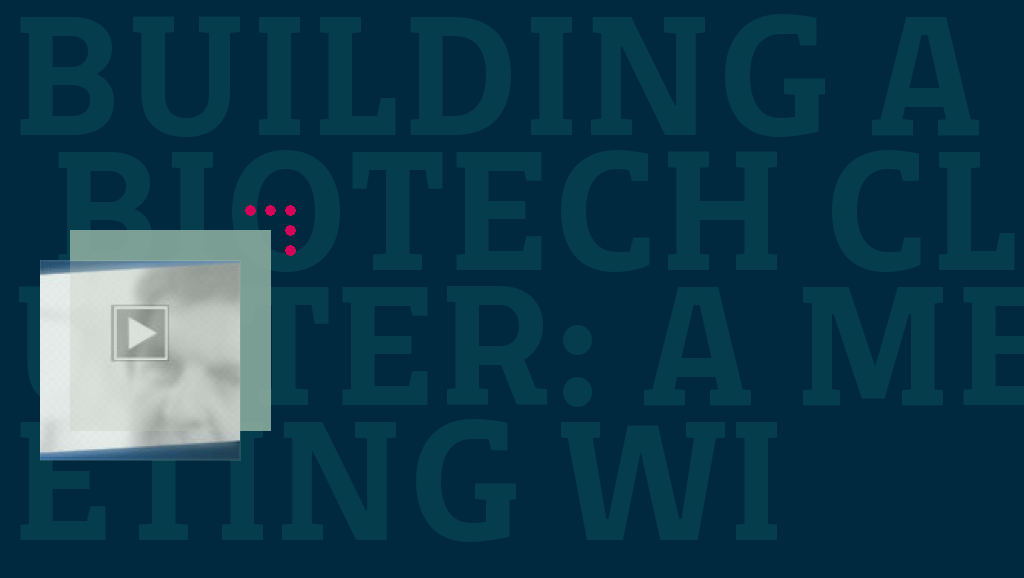On the 22nd of November 2018, the Bassetti Foundation had the pleasure and honour of hosting the “Building a biotech cluster: the MedCity experience” seminar, an audience with Eliot Forster.
The speaker is President of the MedCity project, whose aim is to promote the natural sciences in the London/Cambridge/Oxford “Golden Triangle”.
The fruits of a collaboration between the Bassetti Foundation and the university of Pavia, the initiative was introduced by Professors Vittorio Bellotti and Francesco Svelto. During the presentation participants learned about the MedCity experience, founded in 2012 and of which Forster was one of the main driving forces alongside the then Mayor of London Boris Johnson.
How do you build an innovation cluster? “It’s very simple, you build a world-leading university and wait 500 years”. Forster began his presentation with this comment that underlines the necessary, but not entirely sufficient role of universities in determining the birth of a cluster.
The Foundation is pleased to be able to share the videos and photos of the meeting with supporting summary provided by Anna Pellizzone.
Index:
- Video
part 1: Eliot Forster “Building innovation through Biocluster”
part 2: Francesco Svelto “U4I University for Innovation” and debate
parte 3: Debate - Podcast
- Summary of the meeting
- Some photos from the meeting
After a short presentation of Advanced Oxford (a knowledge based cluster that includes space engineering, nuclear physics, biotechnology and other world-leading programs) and of F-star (a companany working on the development of monoclonal antiboidies for cancer treatment) Eliot Forster recounted his experience with MedCity. This project’s aim was to respond to the financial crisis, with the aim of diversifying and growing the economy of London through the life sciences, by constructing a public-private partnership and creating an alliance between the actors working in the sector in the “Oxford-Cambridge-London” Golden Triangle.
In London, the hospitals, businesses, universities, patients’ groups and investors were already present before the formation of the cluster. What was lacking was the coordination of these various actors towards a shared goal. Each operated with its own objectives, objectives that remain to this day: the hospitals care for patients, investors look to make an economic return, business leaders and entrepreneurs found and run their concerns. The difference today is that there is “cluster life science thinking”, similar to something we can find in Silicon Valley or in the area within and around Boston Massachusetts.
The birth and development of MedCity were characterized by a series of elements, among which a doubling of turnover in 2010 in terms of financial resources, for a total of 24.5 billion Pounds, about 10 of which derived from the pharmaceutical sector (Cambridge area), 5.5 from medical instrumentation, (London area) and 9 from biotech research (Oxford area).
To guarantee the survival and expansion of the cluster over time, MedCity required the support of the political decision makers beyond the changes of regime mandated by the electorate. This was achieved, with the present Mayor of London also supporting the project. In this sense we could say the the MedCity project is political in terms of its vision, but apolitical from party lines.
The geographical and temporal travel dimensions were also highlighted by Forster as a fundamental element for the construction of a cluster: in Boston, San Francisco and within the Golden Triangle of MedCity, travel times between one hub and another are less than 45 minutes (the link between Oxford and Cambridge is currently under construction).
A further crucial element for the development of a cluster is the capacity to transform ideas into products. One aspect, namely that of technology transfer, is guaranteed at MedCity thanks to the presence of an enormous number of spin-outs (897) and to credit that is given to businesses, even in the case of failure. This is because according to Forster failure is part of the learning curve for businesses.
The recipe for the construction of a cluster requires a series of ingredients. The people, and services for the personnel are necessary of course, and infrastructure, both for moving within the cluster and between clusters and groups on a global scale. Another crucial element is political will – or what Forster calls ‘sentiment’ – that can be expressed in various ways, for example favouring the construction of appropriate infrastructure or the adoption of incentives for those working in the research and development sector – alongside the necessary economic resources. In order to collaborate there need to be the right spaces, and fundamental of course is the possibility of real access to the necessary technology.
The MedCity presentation was followed by an intervention from Professor Svelto, who presented the University for Innovation (U4I), an intra-university collaboration that readers may be familiar with via its presentation this April at the Bassetti foundation. The Vice Rector highlighted the difficulties faced by Italian universities with technology transfer. As a result Fondazione U41 was founded in order to promote business, interdisciplinarity and the culture of innovation, with the protagonists three Lombard universities: Pavia, Milano-Bicocca and Bergamo.
The dialogue with Eliot Forster was then opened to the public, which included the presence of President Piero Bassetti. One of the questions raised that is of particular interest to the Bassetti Foundation regarded the strategies followed by MedCity to encourage public participation and citizen information exchange. The initiatives described were numerous: from open labs in hospitals to ties with the media and specific spaces dedicated to connecting researchers with citizens. Among the other themes raised and discussed in the debate were those of the impact and valorization of research and innovation for society, the relationship between the cluster and European and national agencies and of the dimensions of the companies involved in the cluster.
Some photos of the event:
———-
















